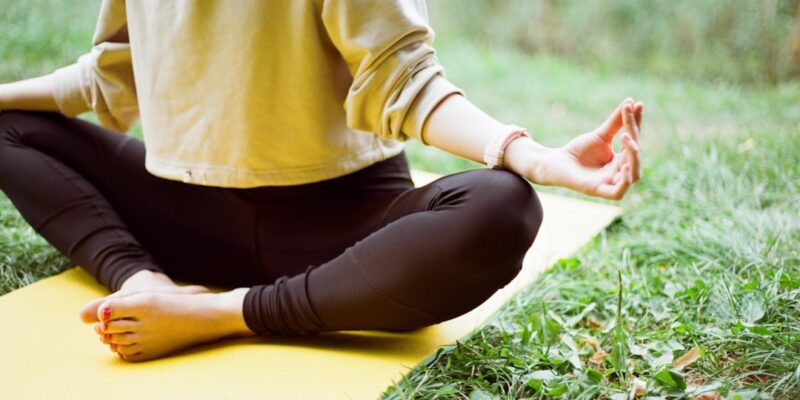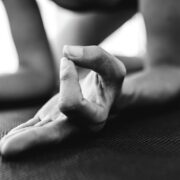
Flexibility Boost: Effective Stretching Routines
Flexibility is an often overlooked aspect of overall fitness, but it plays a crucial role in maintaining a healthy and functional body. Flexibility refers to the ability of your joints and muscles to move through their full range of motion. It is important for everyday activities such as bending down to tie your shoes, reaching for objects on high shelves, and even sitting and standing with proper posture. In addition to improving your physical performance, flexibility also has numerous benefits for your overall health and well-being.
Key Takeaways
- Flexibility is an important aspect of overall fitness that can improve mobility and prevent injury.
- There are different types of stretching, including static, dynamic, PNF, and yoga poses.
- Warming up before stretching is crucial to prepare the muscles and prevent injury.
- Effective static stretching routines can improve flexibility and range of motion.
- Dynamic stretching is a more active approach to stretching that can improve athletic performance.
The Importance of Flexibility in Overall Fitness
Flexibility is an essential component of overall fitness because it allows you to move more freely and efficiently. When your muscles and joints are flexible, you are less likely to experience pain or discomfort during physical activity. This can help prevent injuries and improve your performance in sports and other physical activities.
In addition to preventing injuries, being flexible also improves your posture and balance. When your muscles are tight and inflexible, it can lead to poor posture and imbalances in your body. This can result in chronic pain, decreased mobility, and an increased risk of falls as you age. By improving your flexibility, you can correct these imbalances and maintain proper alignment in your body.
Understanding the Different Types of Stretching
There are several different types of stretching that can be used to improve flexibility. Each type has its own benefits and uses, so it is important to understand the differences between them.
Static stretching is the most common type of stretching and involves holding a stretch for a prolonged period of time. This type of stretching is best done after a workout or physical activity when your muscles are warm. Static stretching helps to lengthen the muscles and increase their flexibility.
Dynamic stretching involves moving through a full range of motion in a controlled manner. This type of stretching is often used as part of a warm-up routine before physical activity. Dynamic stretching helps to improve joint mobility, increase blood flow to the muscles, and prepare the body for more intense exercise.
PNF (proprioceptive neuromuscular facilitation) stretching is a more advanced form of stretching that involves contracting and relaxing the muscles being stretched. This type of stretching is often done with a partner and can help to improve flexibility more quickly than other types of stretching.
How to Warm Up Before Stretching
| Warm Up Exercise | Description | Benefits |
|---|---|---|
| Jumping Jacks | Jumping with arms and legs spread wide apart and then returning to a standing position. | Increases heart rate, warms up muscles, and improves coordination. |
| High Knees | Running in place while lifting knees up to hip level. | Increases heart rate, warms up leg muscles, and improves balance. |
| Butt Kicks | Running in place while kicking heels up to touch your buttocks. | Increases heart rate, warms up leg muscles, and improves flexibility. |
| Arm Circles | Standing with arms extended to the sides and making circular motions with the arms. | Warms up shoulder muscles and improves range of motion. |
| Leg Swings | Standing on one leg and swinging the other leg back and forth. | Warms up leg muscles and improves flexibility. |
Before engaging in any type of stretching, it is important to warm up your muscles and increase blood flow to the area. This helps to prevent injury and prepares your body for the stretching exercises to come.
A good warm-up routine should include a combination of cardiovascular exercise and dynamic stretching. This could include activities such as jogging in place, jumping jacks, or high knees. The goal is to get your heart rate up and increase blood flow to your muscles.
After completing a few minutes of cardiovascular exercise, you can then move on to dynamic stretching exercises. These exercises should mimic the movements you will be doing during your workout or physical activity. For example, if you are going for a run, you could do walking lunges or leg swings to warm up your leg muscles.
Effective Static Stretching Routines for Improved Flexibility
Static stretching is a great way to improve flexibility and should be done after a workout or physical activity when your muscles are warm. Here are some examples of static stretching exercises that target different muscle groups:
1. Hamstring Stretch: Sit on the floor with one leg extended in front of you and the other leg bent with the sole of your foot against your inner thigh. Reach forward with both hands and try to touch your toes. Hold this stretch for 30 seconds on each side.
2. Quadriceps Stretch: Stand tall with one hand against a wall for balance. Bend one knee and grab your ankle with your hand, pulling your heel towards your glutes. Hold this stretch for 30 seconds on each side.
3. Chest Stretch: Stand tall with your feet shoulder-width apart. Interlace your fingers behind your back and squeeze your shoulder blades together as you lift your arms up and away from your body. Hold this stretch for 30 seconds.
When performing static stretches, it is important to hold each stretch for at least 30 seconds to allow the muscles to relax and lengthen. Avoid bouncing or jerking movements, as this can cause injury.
Dynamic Stretching: A More Active Approach to Stretching
Dynamic stretching is a more active approach to stretching that involves moving through a full range of motion in a controlled manner. This type of stretching is often used as part of a warm-up routine before physical activity. Here are some examples of dynamic stretching exercises:
1. Arm Circles: Stand tall with your feet shoulder-width apart. Extend your arms out to the sides and make small circles with your hands, gradually increasing the size of the circles. After a few seconds, reverse the direction of the circles.
2. Walking Lunges: Take a step forward with your right foot and lower your body into a lunge position, keeping your front knee directly above your ankle. Push off with your back foot and bring it forward into the next lunge. Continue walking forward, alternating legs.
3. Leg Swings: Stand tall next to a wall or other support. Swing one leg forward and backward in a controlled manner, gradually increasing the height of the swing. After a few swings, switch to swinging the leg side to side.
When performing dynamic stretches, it is important to move through each movement slowly and with control. Avoid jerking or bouncing movements, as this can cause injury.
PNF Stretching: The Science Behind the Stretch
PNF (proprioceptive neuromuscular facilitation) stretching is a more advanced form of stretching that involves contracting and relaxing the muscles being stretched. This type of stretching is often done with a partner and can help to improve flexibility more quickly than other types of stretching.
PNF stretching works by using the body’s natural reflexes to increase the range of motion in a muscle. When a muscle is stretched to its limit, the body’s natural response is to contract the muscle to protect it from injury. By contracting the muscle before stretching it further, you can override this reflex and increase the muscle’s flexibility.
Here are some examples of PNF stretching exercises:
1. Hamstring Stretch: Lie on your back with one leg extended straight up towards the ceiling. Have your partner gently push your leg towards your head, while you resist the movement by pushing your leg back down into their hand. After a few seconds, relax and allow your partner to push your leg further into the stretch.
2. Quadriceps Stretch: Lie on your stomach with one leg bent at the knee and your foot towards your glutes. Have your partner gently push your foot towards your glutes, while you resist the movement by pushing your foot away from your glutes. After a few seconds, relax and allow your partner to push your foot further towards your glutes.
3. Shoulder Stretch: Stand tall with one arm extended straight out in front of you at shoulder height. Have your partner gently push your arm towards your body, while you resist the movement by pushing your arm away from your body. After a few seconds, relax and allow your partner to push your arm further towards your body.
When performing PNF stretches, it is important to communicate with your partner and only push to a comfortable level of intensity. It is also important to relax and breathe deeply during each stretch to allow the muscles to lengthen.
Yoga for Flexibility: Poses and Practices for All Levels
Yoga is a great way to improve flexibility because it combines stretching with strength and balance exercises. In addition to improving flexibility, yoga also helps to reduce stress, increase mindfulness, and improve overall well-being. Here are some examples of yoga poses for flexibility:
1. Downward Dog: Start on your hands and knees with your hands shoulder-width apart and your knees hip-width apart. Press into your hands and lift your hips up towards the ceiling, straightening your legs as much as possible. Press your heels towards the floor and relax your head between your arms.
2. Forward Fold: Stand tall with your feet hip-width apart. Hinge forward at the hips and lower your torso towards your legs, reaching for your toes or the floor. Allow your head and neck to relax, and breathe deeply into the stretch.
3. Pigeon Pose: Start on all fours with your hands directly under your shoulders and your knees directly under your hips. Bring one knee forward towards your wrist, placing it on the floor just behind your hand. Extend the opposite leg straight back behind you, keeping the hips square. Lower down onto your forearms or rest your forehead on the floor.
When practicing yoga for flexibility, it is important to listen to your body and only go as far into each pose as feels comfortable. It is also important to breathe deeply and relax into each stretch.
Foam Rolling and Self-Myofascial Release Techniques
Foam rolling and self-myofascial release techniques are another effective way to improve flexibility and reduce muscle tension. Foam rolling involves using a foam roller to apply pressure to specific areas of the body, helping to release tight muscles and improve mobility.
Foam rolling can be done before or after a workout, or even on rest days to help speed up recovery. Here are some examples of foam rolling exercises:
1. Quadriceps Roll: Lie face down on the floor with a foam roller positioned just above your knees. Place your forearms on the floor for support and slowly roll your body forward and backward, focusing on the front of your thighs.
2. IT Band Roll: Lie on your side with a foam roller positioned just below your hip. Place your top foot on the floor in front of you for support and slowly roll your body forward and backward, focusing on the outside of your thigh.
3. Upper Back Roll: Sit on the floor with a foam roller positioned horizontally behind you, just below your shoulder blades. Place your hands behind your head for support and slowly roll your body up and down, focusing on the muscles between your shoulder blades.
When foam rolling, it is important to move slowly and apply pressure to any tight or tender areas. You can also pause on these areas and use small movements to help release tension.
Stretching for Injury Prevention and Rehabilitation
Stretching is not only important for improving flexibility, but it is also crucial for preventing and rehabilitating injuries. When muscles are tight and inflexible, they are more prone to strains, sprains, and other injuries. By incorporating stretching into your fitness routine, you can help prevent these injuries from occurring.
In addition to preventing injuries, stretching can also help with the rehabilitation process if you do experience an injury. Stretching helps to improve blood flow to injured muscles, reduce inflammation, and promote healing. It can also help to restore range of motion and prevent muscle imbalances that can occur during the recovery process.
Here are some examples of stretching exercises that can help prevent and rehabilitate injuries:
1. Calf Stretch: Stand facing a wall with one foot in front of the other. Place your hands on the wall for support and lean forward, keeping your back leg straight and your heel on the ground. Hold this stretch for 30 seconds on each side.
2. Hip Flexor Stretch: Kneel on one knee with the other foot in front of you, making sure both knees are at 90-degree angles. Place your hands on your hips and gently push your hips forward, feeling a stretch in the front of your hip. Hold this stretch for 30 seconds on each side.
3. Shoulder Stretch: Stand tall with your feet shoulder-width apart. Extend one arm across your chest and use your other arm to gently pull it closer to your body. Hold this stretch for 30 seconds on each side.
When stretching for injury prevention and rehabilitation, it is important to start slowly and only go as far into each stretch as feels comfortable. It is also important to listen to your body and avoid any stretches that cause pain or discomfort.
Incorporating Stretching into Your Daily Routine
In order to reap the benefits of stretching, it is important to make it a regular part of your daily routine. Here are some tips for incorporating stretching into your daily routine:
1. Schedule It: Set aside a specific time each day for stretching, whether it’s first thing in the morning, during your lunch break, or before bed. By scheduling it into your day, you are more likely to stick with it.
2. Make It a Habit: Start small by committing to just a few minutes of stretching each day and gradually increase the duration as it becomes a habit. Consistency is key when it comes to improving flexibility.
3. Find What Works for You: Experiment with different types of stretching and find what works best for your body and goals. Some people may prefer static stretching, while others may enjoy the more active approach of dynamic stretching or yoga.
4. Mix It Up: Don’t be afraid to mix up your stretching routine to keep things interesting and prevent boredom. Try different exercises, incorporate props such as resistance bands or yoga blocks, or even take a yoga class or join a stretching group.
5. Listen to Your Body: Pay attention to how your body feels during and after stretching. If a certain stretch causes pain or discomfort, modify it or try a different stretch altogether. It’s important to listen to your body and only do what feels right for you.
Flexibility is an important aspect of overall fitness that is often overlooked. By improving your flexibility, you can improve your physical performance, prevent injuries, and improve your overall health and well-being. There are several different types of stretching that can be used to improve flexibility, including static stretching, dynamic stretching, PNF stretching, yoga, and foam rolling. By incorporating stretching into your daily routine and making it a habit, you can start reaping the benefits of improved flexibility. So why wait? Start incorporating stretching into your fitness routine today and enjoy the many benefits it has to offer.
FAQs
What is flexibility?
Flexibility refers to the range of motion in a joint or group of joints. It is the ability to move joints through their full range of motion.
Why is flexibility important?
Flexibility is important for maintaining good posture, preventing injuries, and improving athletic performance. It also helps to reduce muscle tension and improve circulation.
What are stretching routines?
Stretching routines are a series of exercises designed to improve flexibility. They involve moving the joints through their full range of motion to increase flexibility and reduce muscle tension.
What are the benefits of stretching routines?
Stretching routines can help to improve flexibility, reduce muscle tension, improve circulation, and prevent injuries. They can also help to improve athletic performance and reduce the risk of muscle soreness after exercise.
How often should I do stretching routines?
It is recommended to do stretching routines at least 2-3 times per week. However, it is important to listen to your body and not overdo it. If you feel pain or discomfort, stop the exercise and consult a healthcare professional.
What are some examples of stretching exercises?
Some examples of stretching exercises include hamstring stretches, quad stretches, calf stretches, shoulder stretches, and back stretches. There are many different types of stretching exercises that can be incorporated into a stretching routine.
How long should I hold each stretch?
It is recommended to hold each stretch for 15-30 seconds. However, some stretches may need to be held for longer depending on the individual’s flexibility and comfort level.
Should I stretch before or after exercise?
It is recommended to do a warm-up before exercise and then stretch after exercise. This helps to prepare the muscles for exercise and then reduce muscle tension and improve flexibility after exercise.













